
Silent Hunter is a World War II submarine combat simulation for MS-DOS, developed by Aeon Electronic Entertainment and published by Strategic Simulations in 1996. The game takes place in the Pacific War during World War II, the player commanding a submarine of the United States Navy. Most contemporary US submarines and Japanese warships are featured along with some generic merchant ships.
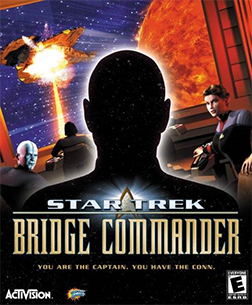
Star Trek: Bridge Commander is a space combat simulation video game for Microsoft Windows, developed by Totally Games and published by Activision in 2002, based in the Star Trek universe.

Descent: FreeSpace – The Great War, known as Conflict: FreeSpace – The Great War in Europe, is a 1998 space combat simulation IBM PC compatible computer game developed by Volition, when it was split off from Parallax Software, and published by Interplay Productions. In 2001, it was ported to the Amiga platform as FreeSpace: The Great War by Hyperion Entertainment. The game places players in the role of a human pilot, who operates in several classes of starfighter and combats against opposing forces, either human or alien, in various space-faring environments, such as in orbit above a planet or within an asteroid belt. The story of the game's single player campaign focuses on a war in the 24th century between two factions, one human and the other alien, that is interrupted in its fourteenth year by the arrival of an enigmatic and militant alien race, whose genocidal advance forces the two sides into a ceasefire in order to work together to halt the threat.
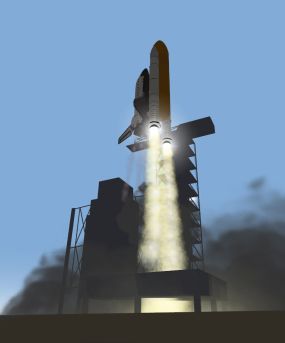
Orbiter is a space flight simulator program developed to simulate spaceflight using realistic Newtonian physics. The simulator was released on 27 November 2000; the latest edition, labeled "Orbiter 2016", was released on 30 August 2016, the first new version of the simulator since 2010. On 27 July 2021, Dr Schweiger announced to the Orbiter Community that Orbiter is being published under open source MIT license.

Solar Winds: The Escape and its sequel Solar Winds: Galaxy are top-down, space-themed role-playing action games developed by James Schmalz and published by Epic MegaGames in 1993.
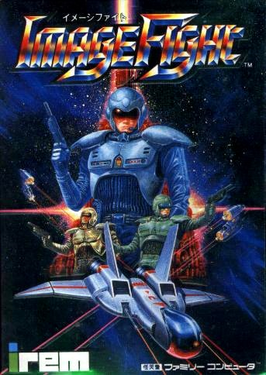
Image Fight is a 1988 vertically scrolling shooter arcade video game developed and published by Irem. It was ported to the Nintendo Entertainment System, PC Engine (Japan-only), Sharp X68000 (Japan-only), and FM Towns (Japan-only) in 1990.

FreeSpace 2 is a 1999 space combat simulation computer game developed by Volition as the sequel to Descent: FreeSpace – The Great War. It was completed ahead of schedule in less than a year, and released to very positive reviews, but the game became a commercial failure, and was described by certain critics as one of 1999's most unfairly overlooked titles.

Buck Rogers: Countdown to Doomsday is a role-playing video game set in the Buck Rogers XXVC universe. It was published in 1990 by Strategic Simulations for MS-DOS, Commodore 64, and Amiga. A Sega Genesis version was released in 1991. Buck Rogers: Matrix Cubed is the 1992 sequel.
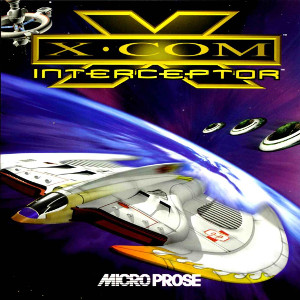
X-COM: Interceptor is the fourth main game in the X-COM series, developed and published by MicroProse in 1998. The game is a combination of many genres, including space flight simulation, business simulation game and strategy game elements. More specifically, the player's role includes managing a number of X-COM space stations, piloting starfighters during hostile encounters whilst co-ordinating wingmen, and managing resources and research. X-COM Interceptor, although released as the fourth game, is actually set before X-COM: Apocalypse, thus making it the third game in the chronological order. The game was re-released in 2008 for Steam and GamersGate, and again in 2016 on GOG.com.

Star Trek: Starfleet Academy is a Star Trek PC simulation game developed and published by Interplay in 1997. The game simulates the life of a typical Starfleet cadet, with the player learning the basics of flying a starship and engaging in roleplaying with a crew of cadets, with the eventual goal of becoming captain of their own ship. The game included full motion video featuring William Shatner, Walter Koenig, and George Takei reprising their roles from the original television series and movies, and a multiplayer simulation mode allowing for up to 32 players.
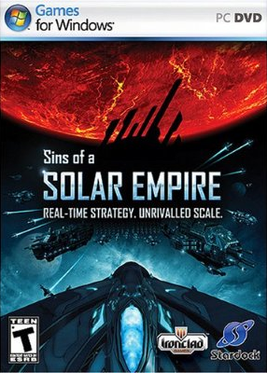
Sins of a Solar Empire is a 2008 science fiction real-time strategy video game developed by Ironclad Games and published by Stardock Entertainment for Microsoft Windows operating systems. It is a real-time strategy (RTS) game that incorporates some elements from 4X games; its makers describe it as "RT4X". Players are given control of a spacefaring empire in the distant future, and are tasked with conquering star systems using military, economic and diplomatic means.

Gladiator: Sword of Vengeance is a hack and slash video game developed by Acclaim Studios Manchester and published by Acclaim Entertainment for PlayStation 2, Xbox and Microsoft Windows. A GameCube version was cancelled. During development, the game was titled I Gladiator. Throwback Entertainment acquired the rights to several of Acclaim's properties in 2006, including Gladiator: Sword of Vengeance.

Mission Critical is a sci-fi adventure game, created by Legend Entertainment for MS-DOS, written by the company's CEO Mike Verdu, and released in November 1995. The game consists of 3D graphics and features live-action scenes, with the cast including Michael Dorn and Patricia Charbonneau. The games storyline focuses on the player taking on the role of a single crew member, who is left behind on their ship after their captain feigns a surrender to ensure a vital mission can continue. The player's goal focuses on repairing their ship after a recent battle, and then getting to the surface of a planet to complete a secret scientific mission that could provide the means to ending a war over technological advancements and artificial life.
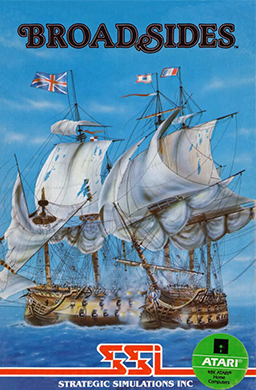
Broadsides is a video game that simulates naval combat in the Age of Sail. It was published by Strategic Simulations in 1983 for the Atari 8-bit computers, Apple II, and Commodore 64.

Star Wars: TIE Fighter is a 1994 Star Wars space flight simulator and space combat video game, a sequel in the Star Wars: X-Wing series. It places the player in the role of an Imperial starfighter pilot during events that occur between The Empire Strikes Back and Return of the Jedi.

Total Eclipse is a space flight simulation video game developed and published by Crystal Dynamics for 3DO. It was later ported to the PlayStation under the title Total Eclipse Turbo. The game was copyrighted in 1993 and released 1994. Total Eclipse Turbo was a launch title for the PlayStation in the U.S., with the game's released date predating the North American console launch by 11 days. A sequel, Solar Eclipse, was released for Sega Saturn and PlayStation.

Silicon Dreams is a trilogy of interactive fiction games developed by Level 9 Computing during the 1980s. The first game was Snowball, released during 1983, followed a year later by Return to Eden, and then by The Worm in Paradise during 1985. The next year they were vended together as the first, second and last of the Silicon Dreams.

FTL: Faster Than Light is a real-time strategy roguelite game created by indie developer Subset Games, which was released for Microsoft Windows, macOS and Linux in September 2012. In the game, the player controls the crew of a single spacecraft, holding critical information to be delivered to an allied fleet, while being pursued by a large rebel fleet. The player must guide the spacecraft through eight sectors, each with planetary systems and events procedurally generated in a roguelike fashion, while facing rebel and other hostile forces, recruiting new crew, and outfitting and upgrading their ship. Combat takes place in pausable real time, and if the ship is destroyed or all of its crew lost, the game ends, forcing the player to restart with a new ship.

Event[0] is a first-person science fiction adventure game developed and published by Ocelot Society. It was released on September 14, 2016, for both Microsoft Windows and macOS. The game follows an astronaut en route to Europa, who, after their ship suffers a catastrophic failure, takes refuge in a dilapidated leisure ship, with the only remaining entity on board being the ship's AI, Kaizen-85. Gameplay consists of exploring the ship, repairing it in hopes of escaping, and speaking with Kaizen-85, an AI with whom the player can converse at length.. The game received positive reviews upon release.

Assassin's Creed Valhalla is a 2020 action role-playing video game developed by Ubisoft Montreal and published by Ubisoft. It is the twelfth major installment in the Assassin's Creed series, and the successor to 2018's Assassin's Creed Odyssey. Principally set in the years 872–878 AD, the game recounts a fictional story during the Viking expansions into the British Isles. Players control Eivor Varinsdottir, a Viking raider who, while attempting to establish a new Viking clan in England, becomes embroiled in the centuries-old conflict between the Assassin Brotherhood, who fight for peace and liberty, and the Templar Order, who desire peace through control. The game also includes a framing story, set in the 21st century, which follows Layla Hassan, an Assassin who relives Eivor's memories so as to find a way to save the Earth from destruction.


















